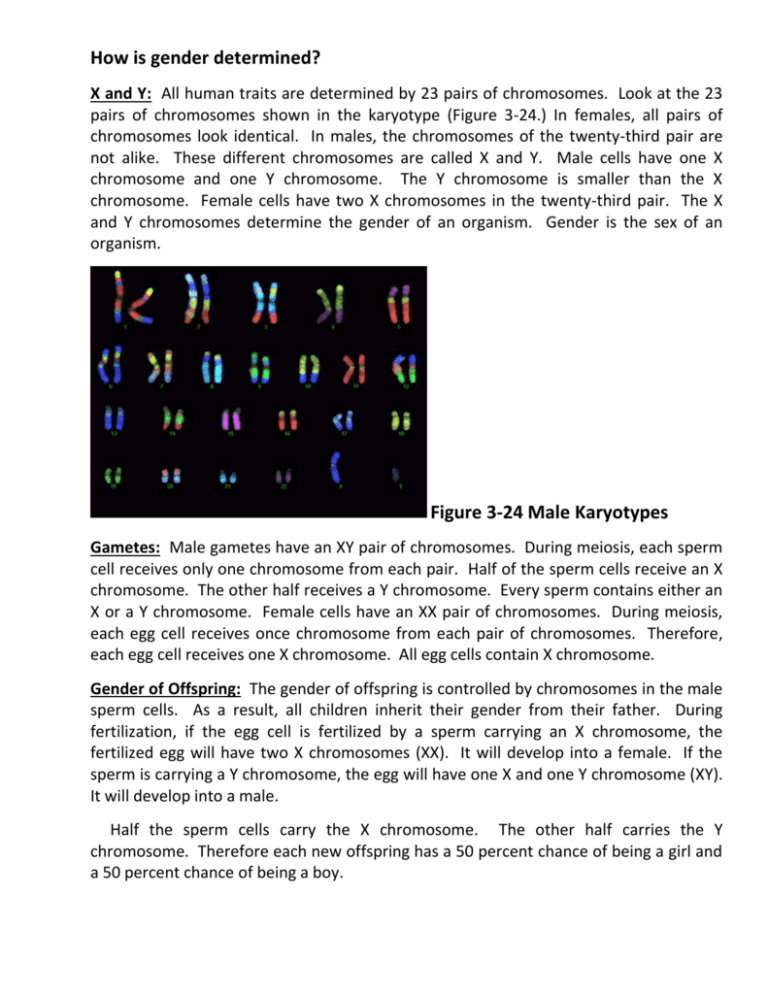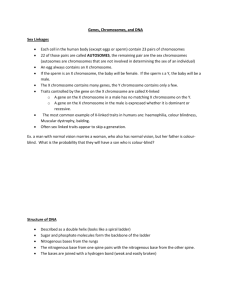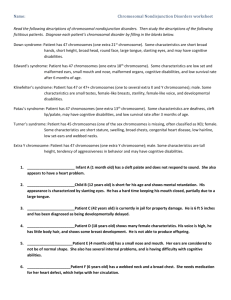Genetics-How gender is determined
advertisement

How is gender determined? X and Y: All human traits are determined by 23 pairs of chromosomes. Look at the 23 pairs of chromosomes shown in the karyotype (Figure 3-24.) In females, all pairs of chromosomes look identical. In males, the chromosomes of the twenty-third pair are not alike. These different chromosomes are called X and Y. Male cells have one X chromosome and one Y chromosome. The Y chromosome is smaller than the X chromosome. Female cells have two X chromosomes in the twenty-third pair. The X and Y chromosomes determine the gender of an organism. Gender is the sex of an organism. Figure 3-24 Male Karyotypes Gametes: Male gametes have an XY pair of chromosomes. During meiosis, each sperm cell receives only one chromosome from each pair. Half of the sperm cells receive an X chromosome. The other half receives a Y chromosome. Every sperm contains either an X or a Y chromosome. Female cells have an XX pair of chromosomes. During meiosis, each egg cell receives once chromosome from each pair of chromosomes. Therefore, each egg cell receives one X chromosome. All egg cells contain X chromosome. Gender of Offspring: The gender of offspring is controlled by chromosomes in the male sperm cells. As a result, all children inherit their gender from their father. During fertilization, if the egg cell is fertilized by a sperm carrying an X chromosome, the fertilized egg will have two X chromosomes (XX). It will develop into a female. If the sperm is carrying a Y chromosome, the egg will have one X and one Y chromosome (XY). It will develop into a male. Half the sperm cells carry the X chromosome. The other half carries the Y chromosome. Therefore each new offspring has a 50 percent chance of being a girl and a 50 percent chance of being a boy.









